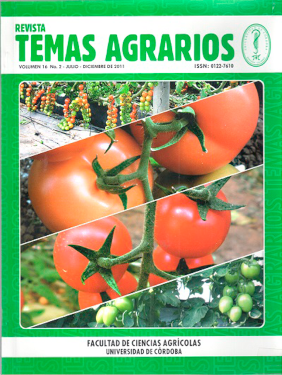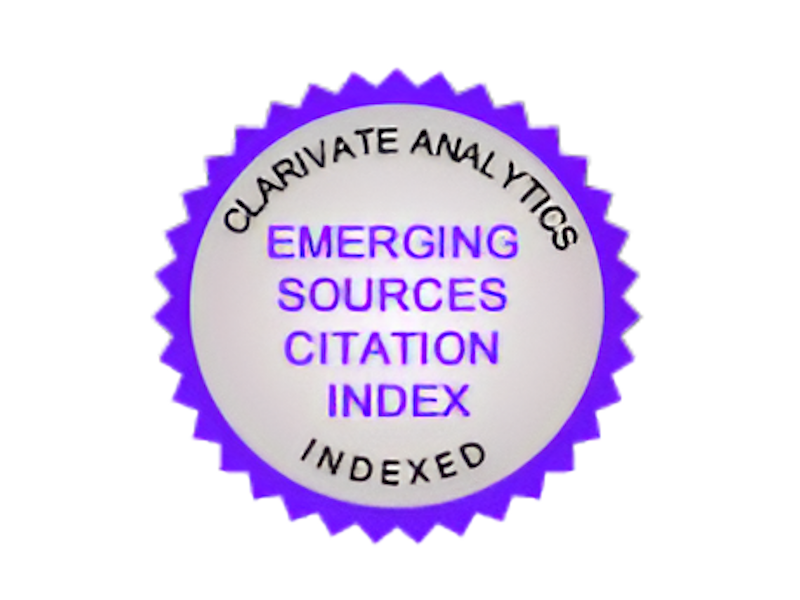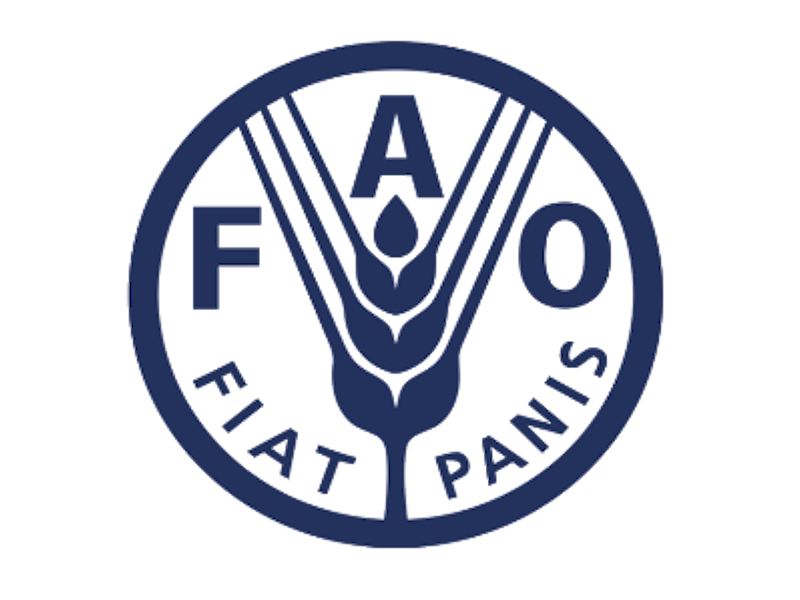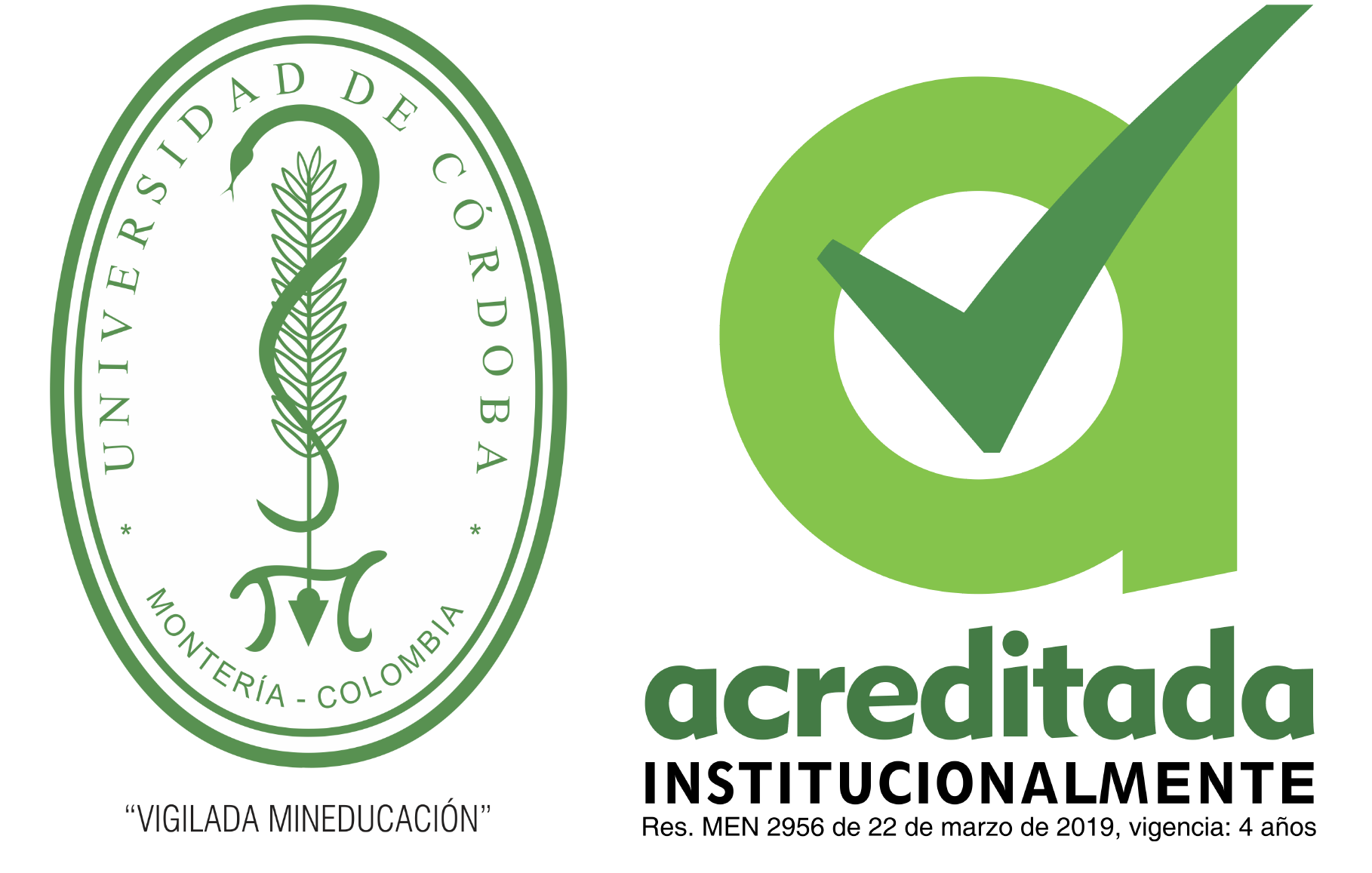Standardizing genomic DNA extraction in Tabebuia rosea (Bertol.) DC. and Cordia alliodora (Ruiz & Pav.) Okén
Estandarización de la extracción de adn genómico en Tabebuia rosea (Bertol.) DC. y Cordia alliodora (Ruiz y Pav.) Okén

This work is licensed under a Creative Commons Attribution-NonCommercial 4.0 International License.
Show authors biography
Because of their great commercial potential and its role on environmental protection, Cordia alliodora and Tabebuia rosea are among species prioritized by Colombia’s National Reforestation Plan, which is executed by the National Corporation for Forestry Research and Development (CONIF) and the Ministry of Agriculture and Rural Development (MADR). Thanks to the advancement of molecular biology techniques, new tools, that are quite useful in plant breeding, are now available, promoting the fixation of genes involved in the expression of desirable phenotypic traits of commercial and productive interest. This study was aimed to standardize a specific genomic DNA extraction method from fresh and dry leaf tissue as well as from seedlings. Significant differences were observed between both species. In C. alliodora, tissue, type and condition was not a limiting factor for extraction and it only depended on the method used. On the other hand, T. rosea has limitations in DNA extraction and amplification from dry tissue, which was attributed to the high concentration of polysaccharides, polyphenols and other secondary metabolites, also reported in other studies for this species. The extracted DNA was quantified and its quality evaluated by DNA amplification using microsatellites. Data were analyzed by both Principal Component Analysis (PCA) and Multiple Factor Analysis (MFA). Based on the results obtained, a DNA extraction protocol was standardized for each of these species and the optimum leaf tissue for that process was defined.
Article visits 1062 | PDF visits
Downloads
- Alaey, M., Naderi, R., Vezvaei, A., Khalighi, A. and Salami, A. 2005. Comparing study between four different methods of genomic DNA extraction from Cyclamen persicum Mill. International Journal of Agriculture & Biology 7(6): 882-884.
- Arbeláez, J., Acevedo, J. y Jaramillo, R. 2011. Metabolitos secundarios en el guayacán amarillo y en el guayacán rosado. Scientia et Technica 47:297- 301.
- Becker, J.M., Caldwell, G.A. and Zachgo, E.A. 1996. Biotechnology: A Laboratory Course. Second Edition. Academic press. p216.
- Benbouza, H., Jacquemin, J.M., Baudoin, J.P. and Mergeai, G. 2006. Optimization of a reliable, fast, cheap and sensitive silver staining method to detect SSR markers in polyacrylamide gels. Biotechnol. Agron. Soc. Environ. 10(2):77-81.
- Borge, W.A. 2008. Producción e incrementos de madera y carbono de laurel (Cordia alliodora) y cedro amargo (Cedrela odorata L.) de regeneración natural en cacaotales y bananales indígenas de Talamanca, Costa Rica. Tesis Mag. Sc. Turrialba, Costa Rica, IICA.
- Boshier, D.H. and Mesén, F. 1989. Breeding population of Cordia alliodora in Costa Rica. In Conference on Breeding Tropical Trees: Population Structure and Genetic Improvement Strategies in Clonal and Seedling Forestry (1988, Pattaya, Tailandia). Procceedings IUFRO Conference. Arlington, USA. Winrock International, p406-407.
- CONIF. 2002. Aplicación de los métodos de estacas e injertos para la propagación vegetativa de Cordia alliodora (Ruiz & Pavon) Oken y Tabebuia rosea (Bertol) DC. Serie de documentación No 47 Bogotá Colombia. p61.
- Dellaporta, S.L., Wood, J. and Hicks, J.B. 1983. A plant DNA Minipreparation: Version II. Plant Mol. Biol. Rep. 1(4):19-21.
- Deshmukh, V.P., Thakare, P.V., Chaudhari, U.S. and Gawande, P.A. 2007. A simple method for isolation of genomic DNA from fresh and dry leaves of Terminalia arjuna (Roxb.) Wight and Argot. Electronic Journal of Biotechnology 10(3):468-472.
- Doyle, J.J. and Doyle, J.L. 1990. Isolation of plant DNA from fresh tissue. Focus 12(1):13-15.
- Grattapaglia, D. 1994. Genetic mapping of quantitatively inherent economically important traits in Eucalyptus Ph.D. Dissertation, North Carolina State University, p289.
- Keb-Llanes, M., González, G., Chi-Manzanero, B. and Infante, D. 2002. A Rapid and Simple Method for Small-Scale DNA Extraction in Agavaceae and Other Tropical Plants. Plant Molecular Biology Reporter 20(3):299.
- Kitajima, K. 2002. Do shade-tolerant tropical tree seedlings depend longer on seed reserves? Functional growth analysis of three Bignoniaceae species. Functional Ecology 16(4):433-444.
- Križman, M., Jakše, J., Baričevič, D., Javornik, B. and Prošek, M. 2006. Robust CTABactivated charcoal protocol for plant DNA extraction. Acta Agriculturae Slovenica 87(2):427-433.
- Li, Y. X., Su, Z. X. and Chen, F. 2002. Rapid Extraction of Genomic DNA From Leaves and Bracts of Dove Tree (Davidia involucrata). Plant Molecular Biology Reporter 20(2):185.
- López, A. 2009. Caracterización con microsatélites de Tabebuia rosea (Bertol.) DC. en ensayos de procedencias y progenies en Colombia. Tesis de maestría en Biología Vegetal, Universidad de Caldas, Manizales - Colombia.
- Martínez, A.J. 2010. Principios activos en el Guayacán Amarillo (Tabebuia chrysantha Jacq. Nicholson, Bignoniaceae) y en el Guayacán Rosado (Tabebuia rosea Bertol. DC. Proyecto de Grado, Universidad del Quindío, Armenia - Colombia.
- Marulanda, M., Claroz, J. y López, A. 2006. Caracterización molecular de progenies de aliso Alnus acuminat H.B.K spp acuminata, mediante marcadores AFLP. Scientia et Technica 32:463-468.
- Matasyoh, L.G., Wachira, F.N., Kinyua, M.G., Thairu, A.W. and Mukiama T.K. 2008. Leaf storage conditions and genomic DNA isolation efficiency in Ocimum gratissimum L. from Kenya. African Journal of Biotechnology 7(5):557-564.
- Mesén, F. 1994. Ensayos de procedencias en especies forestales: establecimiento, manejo, evaluación y análisis. In: Manual sobre mejoramiento genético forestal con referencia especial a América Central. Centro Agronómico Tropical de Investigación y Enseñanza CATIE, Turrialba, Costa Rica. p25-44.
- Michiels, A., Ende, W.V. den, Tucker, M., Riet L.V. and Laere A.V. 2003. Extraction of high-quality genomic DNA from latex-containing plants. Analytical Biochemistry 315(1):85-89.
- Narayanan, C., Dubey, S., Wali, S.A., Shukla, N., Kumar, R., Mandal, A.K. and Ansari, S.A. 2006. Optimization of DNA extraction for ISSR studies in Tectona grandis L.f. - an important forest tree species. African Journal of Biotechnology 5(13):1220-1223.
- OFI (Oxford Forestry Institute) - CATIE (Centro Agronómico Tropical de Investigación y Enseñanza). 2003. Árboles de Centroamérica: un manual para extensionistas, p1079.
- Porebski, S., Bailey, L.G. and Baum, B.R. 1997. Modification of CTAB DNA extraction protocol for plants containing high polysaccharide and polyphenol components. Plant Molecular Biology Reporter 15(1):8-15.
- Rout, G.R., SamaL, S., Nayak, S., Rashmi, M.N., Lenka, P.C. and Das, P. 2002. An Alternative Method of Plant DNA Extraction of Cashew (Anacardium occidentale L.) for Randomly Amplified Polymorphic DNA (RAPD) analysis. Gartenbauwissenschaft 67(3):114-118.
- Sghaier, Z.A. and Mohammed, C. 2005. Genomic DNA extraction method from pearl millet (Pennisetum glaucum) leaves. African Journal of Biotechnology 4(8):862-866.
- Sharma, A.D., Gill, P.K. and Singhdna, P. 2002. Isolation From Dry and Fresh Samples of Polysaccharide-Rich Plants. Plant Molecular Biology Reporter 20(4):415.
- Vit, P. 2004. Tabebuia rosea (Bertol.) DC. Ficha botánica de interés apícola en Venezuela, No. 7 Apamate. Revista Facultad de Farmacia 46(1):57-59.
- Zamudio, F. y Guerra, F. 2002. Especies forestales de rápido crecimiento con énfasis en el género Populus. Universidad de Talca. Facultad de Ciencias Forestal. Chile, p1-68.
- Zhang, J. and Mcstewart, J.D. 2000. Economical and rapid method for extracting cotton genomic DNA. Journal of Cotton Science 4(3):193-201




















